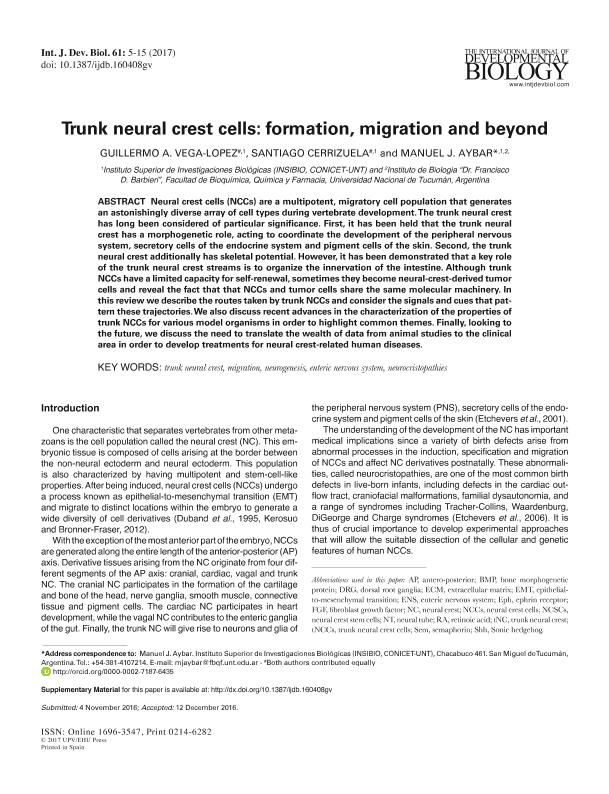Artículo
Trunk neural crest cells: Formation, migration and beyond
Fecha de publicación:
03/2017
Editorial:
Universidad del País Vasco
Revista:
International Journal Of Developmental Biology
ISSN:
0214-6282
e-ISSN:
1696-3547
Idioma:
Inglés
Tipo de recurso:
Artículo publicado
Clasificación temática:
Resumen
Neural crest cells (NCCs) are a multipotent, migratory cell population that generates an astonishingly diverse array of cell types during vertebrate development. The trunk neural crest has long been considered of particular significance. First, it has been held that the trunk neural crest has a morphogenetic role, acting to coordinate the development of the peripheral nervous system, secretory cells of the endocrine system and pigment cells of the skin. Second, the trunk neural crest additionally has skeletal potential. However, it has been demonstrated that a key role of the trunk neural crest streams is to organize the innervation of the intestine. Although trunk NCCs have a limited capacity for self-renewal, sometimes they become neural-crest-derived tumor cells and reveal the fact that that NCCs and tumor cells share the same molecular machinery. In this review we describe the routes taken by trunk NCCs and consider the signals and cues that pattern these trajectories. We also discuss recent advances in the characterization of the properties of trunk NCCs for various model organisms in order to highlight common themes. Finally, looking to the future, we discuss the need to translate the wealth of data from animal studies to the clinical area in order to develop treatments for neural crest-related human diseases.
Archivos asociados
Licencia
Identificadores
Colecciones
Articulos(INSIBIO)
Articulos de INST.SUP.DE INVEST.BIOLOGICAS
Articulos de INST.SUP.DE INVEST.BIOLOGICAS
Citación
Cerrizuela, Santiago; Vega López, Guillermo Alfredo; Aybar, Manuel Javier; Trunk neural crest cells: Formation, migration and beyond; Universidad del País Vasco; International Journal Of Developmental Biology; 61; 1-2; 3-2017; 5-15
Compartir
Altmétricas




